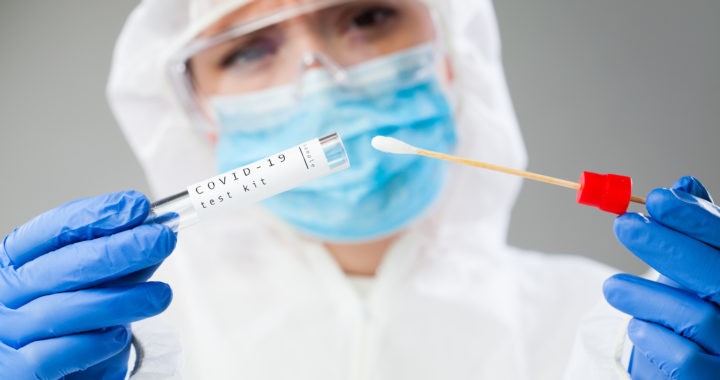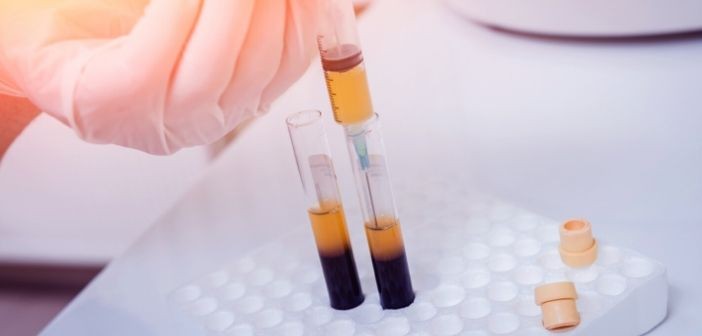COVID-19 Latest Update: Impact on mHealth Apps in Healthcare Industry

COVID-19 outbreak has also made healthcare professionals to look for alternative methods to traditional systems and processes. This is leading an expedited adoption of mHealth across the industry both from providers and consumers.
COVID-19 Pandemic Impact on Wearable Technology

Wearables technology products have been accepted well in the consumer medical tech field but the healthcare industry has questioned their utility beyond heart rate tracking and for more crucial applications of healthcare. This means that the market was limited to consumers and healthcare providers till now.
COVID-19 Update: Impact on In-Vitro Diagnostics Market

Exponential rise in cases of corona virus across the globe is increasing the demand of in-vitro diagnostic kits. The factors responsible for the rise in demand of IVD includes increased market demand for PCR, NGS, serology-based rapid-test products, a supportive regulatory environment for product development and marketing along with sharp increase in target patient population. Due to these factors, various market players have been prompted to improve and strengthen their current production and distribution capabilities and to focus on upgradation and marketing of their product.
COVID-19 Impact on Agriculture Robots Market 2020

Healthcare robots can play a critical role in the current pandemic by reducing human involvement and shielding health staff from infection. This will involve measuring patients' temperatures, disinfecting equipment, measuring specimen swabs and delivering much-needed psychological assistance to patients in isolation. Researchers are now beginning to illustrate the cyclical aspect of technology right after the recession. The COVID-19 contraction would accelerate labor-replacement automation as business sales see a fall. This might have arrived during the 'cultural shock' as automation eliminates low-skilled jobs.
Digital pathology - COVID-19 Impact on Pathology in Healthcare Industry

In current clinical practices, digital pathology technology has been instrumental. In the background of the latest Coronavirus outbreak, it has become more important resource in the research laboratory ecosystems and is gaining traction recently. Although it was initially created as a cost-effective pathological method to help pathologies achieve better efficiency, digital pathology is now reemerging as a key item for pathologies to present extended workflows in the global pandemic. Including emerging technologies as artificial intelligence (AI) and machine learning, the unprecedented advantages of digital pathology integration provide incredible diagnostic possibilities far beyond traditional cardiology, and radiation. The COVID-19...
COVID-19 Impact on PPE in Healthcare Workplace

The outbreak of COVID-19 is having a huge impact on the healthcare industry majorly the PPE (Personal Protective Equipment). PPE includes gloves, mask, gown, goggles, N95 respirators, and hand sanitizer. Currently, it is the only preventive measure for the healthcare professional to prevent themselves from the spread of corona virus.
COVID-19: Impact of Convalescent Plasma Therapy in Healthcare Industry

Coronavirus is a large family of viruses known for diseases ranging from the common cold to even more serious diseases such as Severe Acute Respiratory Syndrome (SARS) and Middle East Respiratory Syndrome (MERS). The virus has spread to almost all regions of the world, affecting both developed and developing countries which have heavily affected pharmaceutical and biotechnology companies. The epidemic spread rapidly across the globe within three months and was characterized by the VHO as a pandemic on March 11, 2020. According to the Worldometers.info statistics, as of 27th April 2020, there are 3,064,225 people are already affected and 211,537 patients are died due to the coronavirus. There are currently no approved specific antiviral...
Wearable Technology Devices Market Analysis Highlights the Impact of COVID-19 (2020-2025)

Wearables technology products have been accepted well in the consumer medical tech field but the healthcare industry has questioned their utility beyond heart rate tracking and for more crucial applications of healthcare. This means that the market was limited to consumers and healthcare providers till now.
Latest Update 2020: Personal Protective Equipment (PPE) Distribution Market by COVID19 Impact Analysis

Rising number of cases of corona virus is increasing the demand of PPE across the globe. According to the UNICEF, the demand for PPE products has surged 1000-2000 fold. Earlier in 2017-2019, the annual demand for coveralls and gowns by low and middle-income countries sourced by UNICEF did not exceed 50,000 units. However, the current demand for three months of these products is around 25 million. Similarly, for different types of facemasks, earlier the annual average procurement sourced by UNICEF was not more than 25000 units but now it has exceeded 55 million due to this target disease.
COVID-19 Impact on Plasma Therapy Market In-Depth Market Research Analysis

Plasma medications are produced from human blood plasma (plasma). Plasma can be obtained from administration of whole blood (recovered plasma) or apheresis procedures (plasma source). The source is plasma a wide range of medicinal therapies products used for treatment and the prevention of various treatment-causing injuries and diseases often associated with a protein deficiency state. Convalescent Plasma Therapy (CP), a classic adaptive immunotherapy, has been used in the prevention and treatment of many infectious diseases for over a century. In the past two decades, CP therapy has been successfully used in the treatment of the 2009 SARS, MERS and H1N1 pandemic with satisfactory efficacy and safety. In 2014, the World Health...